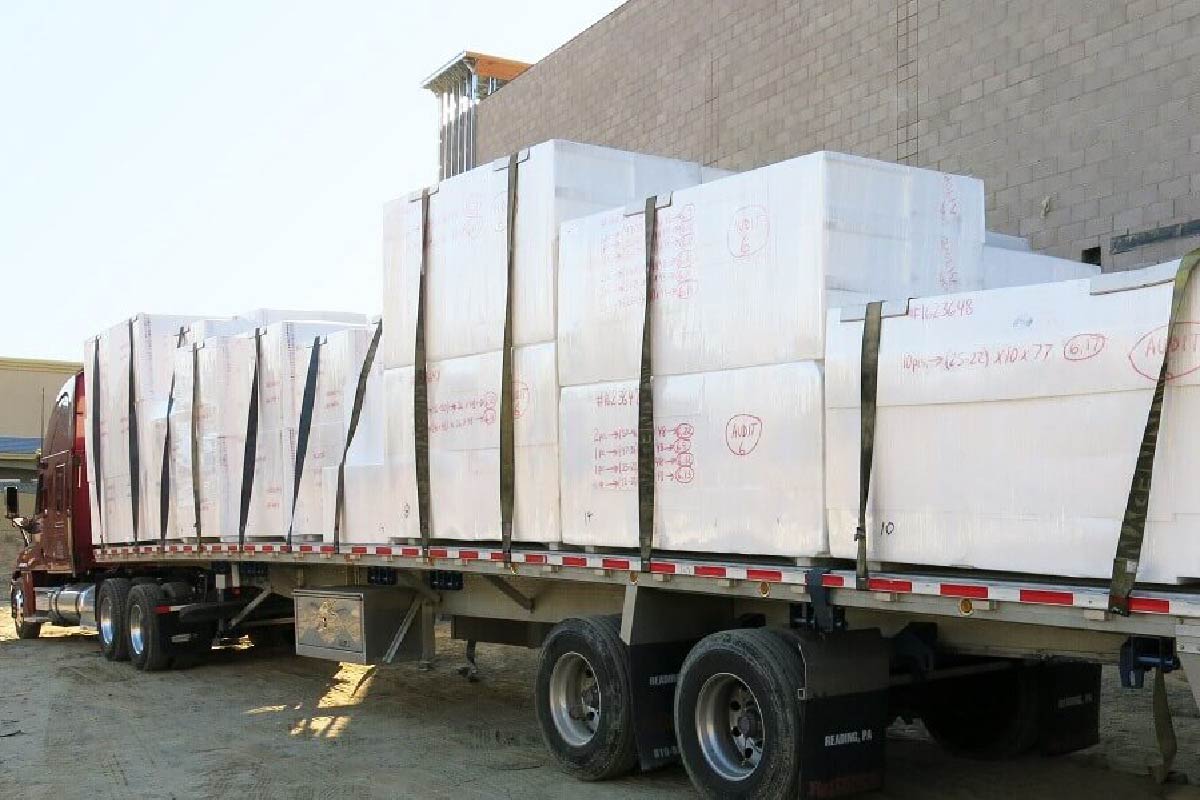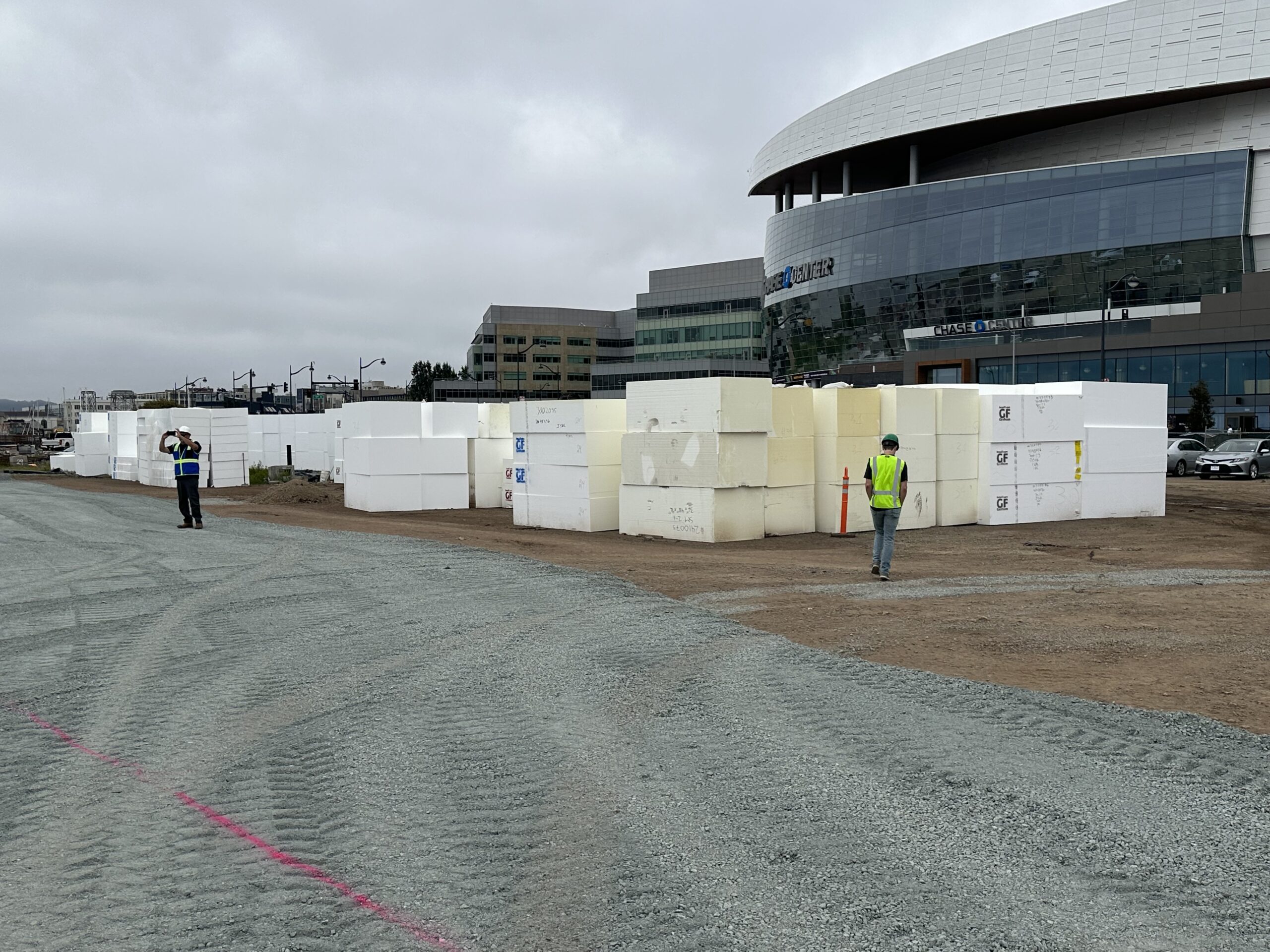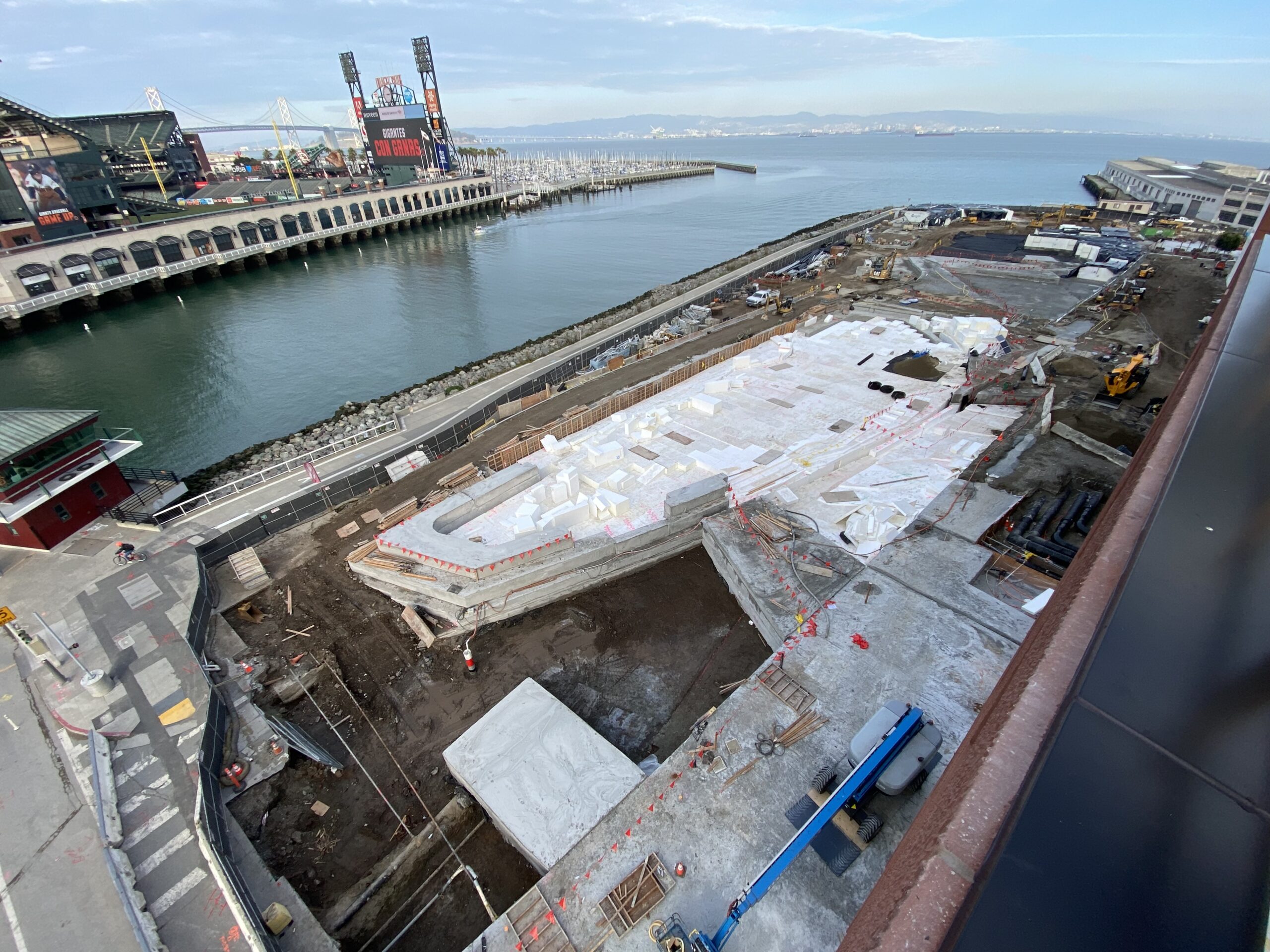When it comes to installing insulation, many factors are involved such as the climate, location, R-value requirements, budget and environmental impact. Here’s a snapshot view of the pros and cons of seven different types of insulation to help you decide which one is best for your project.
CONCRETE BLOCK INSULATION
Concrete blocks are commonly used to construct foundations and walls of new construction or for major renovations, but they provide little thermal resistance. Depending on the density of the blocks, an 8-inch thick block wall, without any other type of insulation, has a thermal resistance value between R-1.9 and R-2.5.
Blocks with open cores can be filled with insulation, which raises the R-value. Another way to improve the R-value of concrete blocks is to install insulation over the surface of the exterior or interior foundation wall blocks.
Precast autoclaved aerated concrete (AAC) and autoclaved cellular concrete (ACC) masonry units are also available. In these units, manufacturers may include air or foam beads into the concrete mix to increase the R-value.
Pros:
- Autoclaved aerated concrete and autoclaved cellular concrete masonry units have 10 times the insulating value of conventional concrete.
- Autoclaved aerated concrete blocks are lightweight — the material is 80% air by volume — and can easily be shaped with commonly used tools.
- Concrete is mold and mildew resistant, resistant to insects and other critters and won’t rot if exposed to moisture over long periods of time.
- Concrete blocks are fire resistant, offering an ASTM E119 fire rating of four hours, when installed properly.
- Concrete has a low VOC emittance rating.
Cons:
- Concrete blocks alone provide little thermal resistance. They require the addition of insulation to improve their R-value.
- Precast autoclaved aerated blocks absorb water readily and require installation of a moisture barrier.
- Installing foam board or other insulation on top of concrete blocks requires specialized skills.
- Filling the core with insulation may raise the R-value but if you’re looking for fuel savings, you’ll be disappointed. Heat is readily conducted through the solid parts of the walls — block webs, mortar joints, etc.
- Water damage is much more common in buildings constructed with concrete blocks. Plumbing systems in concrete buildings require very good drainage to avoid costly flooding or plumbing issues. If repairs are necessary, the concrete may need to be cut to make repairs if the pipes aren’t accessible.
- Building structures with concrete block is expensive.
INSULATED CONCRETE FORMS (ICFS)
Insulated concrete forms are permanent forms built onsite and filled with five to six inches of reinforced concrete. This provides two built-in layers of insulation. Typically, these stackable interlinking blocks use polypropylene plastic as the insulating material and are used to form walls, ceilings and foundations.
Pros:
- They have a high thermal resistance (typically R-20), which improves energy efficiency levels and may reduce energy expenses up to 70%.
- Structures made with ICFs have the strength of a reinforced concrete wall.
- ICFs are moisture resistant and resistant to mold.
- The blocks are fire resistant and non-combustible.
- ICFs do not contain hydrochlorofluorocarbons (HCFCs), formaldehyde, fiberglass, asbestos or chlorofluorocarbons (CFCs), so air quality is healthier and it produces little to no off-gassing.
Cons:
- Correct installation is critical to enjoy a reduction in energy expenses and a significant reduction of dust and allergen pollution. Installation requires someone with special skills.
- ICFs don’t perform well in cold climates. Once heat transfers from the interior of the structure to the concrete, that heat is lost to the ground via the footings.
- Concrete needs time to cure, delaying the construction timeline. Rushing the curing process can result in a significantly inferior product.
- ICFs are expensive compared to other building materials. You can expect to pay about 40% more than if you use alternative methods of insulation, in part because you’re paying for specialty labor.
- The foam webbing around the cores of the blocks can potentially provide easy access for insects and groundwater.
LOOSE-FILL & BLOWN-IN INSULATION
The most common types of materials used for loose-fill insulation include cellulose, fiberglass and mineral wool. Cellulose, fiberglass and rock wool are most often used for blown-in insulation.
Pros:
- Loose-fill fiberglass and mineral wool settle an insignificant amount, so their thermal performance is maintained throughout the life of the structure.
- Loose-fill and blown-in insulation can conform to any space without disturbing existing structures or requiring special fitting.
- This type of insulation is typically made from recyclable materials: Cellulose is mainly recycled newsprint, fiberglass is typically 40% to 60% recycled glass and mineral wool is usually produced from 75% post-industrial recycled content. This type of insulation can be recycled.
- This is one of the least expensive types of insulation.
Cons:
- It takes an experienced installer to achieve the correct density and R-values for blown-in insulation.
- Fiberglass dust can irritate lungs, eyes and skin.
- Cellulose may be too heavy to use in an attic or on a roof or ceiling.
- Loose-fill and blown-in insulation holds moisture which can affect its performance and make it subject to mold. For example, cellulose absorbs 5% to 20% of its weight in moisture.
- Cellulose insulation is combustible and presents a fire hazard.
SPRAY FOAM INSULATION
There are two types of foam-in-place insulation — closed-cell and open-cell. Both are typically made from polyurethane. Spray foam insulation serves as both insulation and an air barrier.
Pros:
- Closed-cell foam creates a complete air, water and vapor seal.
- It can be applied to any surface
- Closed-cell foam offers high R-value densities.
- Most foam materials use foaming agents that don’t include CFCs or HCFCs, which are harmful to the earth’s ozone layer.
Cons:
- Spray foam insulation emits potent greenhouse gasses and contains isocyanates that may cause skin, eye and lung irritation, asthma and “sensitization.” All other trades must evacuate the premises during installation.
- Spray foam insulation can be messy, requiring extensive clean-up, and can leak through unsealed joints and openings.
- Most types of liquid foam insulation require special equipment and should be installed only by experienced workers.
- Spray foam is susceptible to UV exposure, resulting in potential loss of its performance.
- Very little recycled content is used in the manufacturing of spray foam and it is not reusable.
- Spray foam insulation is pricier than other insulations.
- A common issue, with closed-cell foam especially, is that it may not be applied thick enough to control the temperature. The application must be uniform and cover all surfaces of the envelope for the seal to be effective.
- Open-cell foam should not be used below ground level since it can absorb water.
- Post installation, the foam must be covered with an approved thermal barrier equal in fire resistance to half-inch gypsum board.
RIGID FIBER INSULATION BOARDS
This type of insulation is often manufactured from fiberglass or mineral wool material. Boards boards range from 1-inch thick to 2.5-inches thick and can be either faced or unfaced. The primary use for rigid fiber insulation boards is for the thermal insulation of air ducts for industrial heating, air conditioning, power and process equipment. Boards are installed with special weld pins and secured with speed clips or washers.
Pros:
- Rigid fiber insulation can withstand very high temperatures.
- The boards absorb less than 1% of their weight in moisture.
- Mold cannot feed on unfaced, inorganic fiber boards.
- Fiberglass and mineral wool insulation are both naturally non-combustible.
- Fiberglass and mineral wool insulation do not shrink or lose thermal performance with exposure to UV rays.
- The fiber boards don’t give off potent greenhouse gasses.
Cons:
- Fiberglass fibers can cause lung, eye and skin irritation.
- The boards have limited application usage.
- Unfaced boards will have to be finished with reinforced insulating cement, canvas or weatherproof mastic. Faced boards will need to be sealed with pressure-sensitive tape or glass fabric and mastic.
REFLECTIVE SYSTEMS
Reflective systems are typically used for unfinished walls, ceilings and floors. Radiant heat travels in a straight line from its source, heating anything solid in its path that absorbs its energy. Rather than reduce conductive heat flow, reflective insulation systems work by interrupting radiant heat, for example, the heat radiating from the underside of a roof. Typically, a radiant barrier reduces the amount of heat transfer by incorporating highly reflective aluminum foils.
Pros:
- This type of insulation is most effective at preventing downward heat flow such as reducing the transfer of radiant heat from the roof to the attic.
- Reflective systems can reduce cooling costs 5% to 10% when used in a warm, sunny climate.
- They are simple to install.
- They don’t deteriorate or compress like other less expensive insulation materials.
Cons:
- Usage is limited. Reflective systems are not generally as cost-effective in cooler climates. If installed in cooler climates, a second insulation type that is more suitable for cooler climates would also need to be used.
- To be effective, the system must be facing an air space.
- Dirt or debris build-up can affect the performance of a reflective system.
EPS GEOFOAM
EPS geofoam or expanded polystyrene comes in a variety of sizes for a broad range of insulating applications. It is often used to insulate foundations, walls and roofs.
Pros:
- EPS geofoam is very easy to install. Blocks are easily cut to shape on the jobsite with a hot wire cutter or a common hand saw. No special skills or tools are required for installation.
- EPS geofoam is one of the most cost-effective insulations on the market today.
- The closed-cell structure of EPS geofoam inhibits moisture absorption and the growth of mold and mildew.
- EPS geofoam is 100% recyclable and uses up to 10% of recycled materials during the manufacturing process of new product.
- No greenhouse gasses are used in the manufacturing process. Steam is the primary component of the manufacturing process. The water used in the manufacturing process is also collected and reused.
- EPS geofoam does not contain formaldehydes, CFCs or HCFCs so the air quality is healthier. The American Lung Association acknowledges EPS geofoam as a safe material for insulation.
- It is extremely lightweight, making it easy to manage. That reduces the labor and resources required for installation.
- With high compressive strengths of up to 60 psi, EPS geofoam blocks are strong and durable. They won’t settle like some insulation materials are prone to do.
- The blocks will not rot, decompose or decay.
- Installation of EPS geofoam is not dependent upon favorable weather conditions. It can be handled and installed in most weather conditions.
- EPS geofoam is 98% to 99% air by volume, making it an excellent thermal insulator.
The R-value of EPS geofoam is stable and doesn’t change with time. EPS geofoam (1.0 pcf) provides a typical R-value of 3.85 per inch (k-factor =0.26) at a mean temperature of 75°F, and a typical R-value of 4.17 per inch (k-factor = 0.24) at a mean temperature of 40°F.
Cons:
- While it typically contains a flame-retardant additive, EPS geofoam is still a combustible material.
- Exposure to UV rays may cause surface discoloration but it does not affect performance.
- EPS geofoam shouldn’t be exposed to hydrocarbons, coal tar or solvent-extended mastics.







